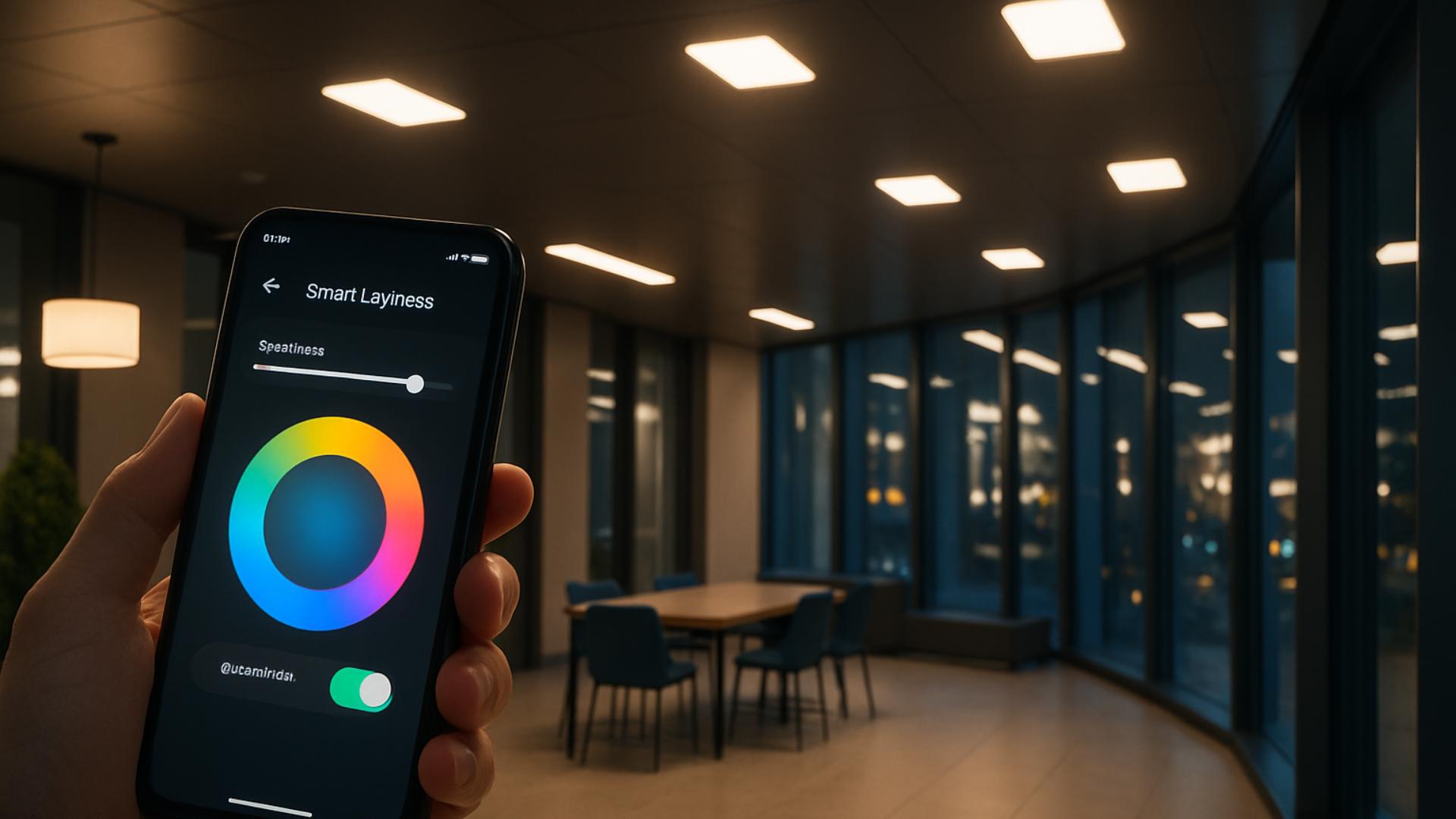Lighting has transcended its traditional role of merely illuminating spaces. Today, we’re witnessing a revolutionary shift towards smart lighting systems that not only enhance energy efficiency but also redefine how we interact with our environments. These systems, equipped with advanced technology, provide versatile solutions for both residential and commercial buildings. Join us as we delve into the intricate world of smart lighting, exploring how this innovation is shaping the future of modern buildings.
Harnessing the Power of Automation
In the age of digitalization, automation has become a cornerstone of modern infrastructure. It’s no longer just about flipping a switch; it’s about creating an integrated system that adapts to our needs seamlessly. Smart lighting systems utilize sophisticated control mechanisms to deliver optimal light distribution. Through sensors, lighting is adjusted based on human presence, natural light availability, and desired ambiance.
Consider the office environment: CLS (Connected Lighting Systems) are designed to create a productive workspace by adjusting brightness levels throughout the day. This not only enhances focus but also conserves energy. By reducing the reliance on manual light switches, smart lighting systems contribute to a sustainable and efficient workplace.
Furthermore, automated systems enable us to program lights according to our schedules, ensuring that we’re never left in the dark. Such solutions are integral in designing spaces that prioritize both comfort and efficiency.
Smart lighting also plays a crucial role in enhancing security. By simulating occupancy through pre-set light patterns, these systems can deter potential intruders, offering peace of mind without a hefty energy bill.
Redefining Energy Efficiency
Energy efficiency lies at the heart of modern architectural design. By integrating smart lighting systems, we can significantly reduce the energy consumption of a building. This not only benefits the environment but also reduces operational costs.
Smart lighting solutions offer a multitude of strategies for achieving energy efficiency. Sensors within these systems detect motion and adjust lighting accordingly, ensuring that spaces are only illuminated when necessary. As a result, energy wastage is minimized, and the lifespan of lighting fixtures is prolonged.
Moreover, smart systems can be programmed to utilize natural light to its fullest. By incorporating daylight harvesting, buildings can automatically adjust artificial lighting levels based on the amount of sunlight entering a space. This design strategy not only reduces energy consumption but also creates a pleasant, well-lit environment for occupants.
The future of energy efficiency in lighting lies in the integration of renewable energy sources. As solar and wind energy become more accessible, smart lighting systems are poised to further reduce reliance on non-renewable resources, paving the way for truly sustainable architecture. {image_content}
Designing Spaces with Light
The influence of lighting on interior design cannot be overstated. Smart lighting systems offer architects and designers unprecedented flexibility in crafting aesthetically pleasing and functional spaces.
Lighting is no longer a mere afterthought; it’s an integral element of design. Through the use of advanced controls and dynamic lighting solutions, designers can create spaces that not only look good but also cater to the functional needs of the occupants.
For instance, in residential buildings, smart lighting can be used to create a variety of atmospheres, from warm and cozy to bright and invigorating, at the touch of a button. This flexibility allows homeowners to tailor the ambiance to their mood or activity, enhancing their quality of life.
In commercial settings, the ability to customize lighting based on the time of day, type of activity, or even the preferences of individual employees can greatly enhance productivity and satisfaction.
Furthermore, smart lighting can play a role in increasing the accessibility of spaces. By offering customizable solutions, architects can design spaces that are more inclusive to individuals with varying needs, such as those with visual impairments.
Embracing the Smart Building Revolution
As we stand at the forefront of a technological revolution, smart lighting systems are pivotal in transforming ordinary buildings into intelligent spaces. Such systems are an investment in a future where efficiency, security, and sustainability are seamlessly integrated into everyday life.
It’s essential to recognize the role of smart lighting in the broader context of smart buildings. These intelligent environments leverage technology to optimize every aspect of a building’s function, from heating and cooling to security and lighting. By designing buildings with these systems in mind, we can create environments that anticipate our needs, rather than simply reacting to them.
Looking ahead, the possibilities for smart lighting systems are virtually limitless. As these technologies evolve, they will undoubtedly become more accessible and affordable, ensuring that every building, regardless of size or purpose, can benefit from their advantages.
Incorporating smart lighting into our design philosophy is not merely an option; it’s an imperative step towards a more sustainable and prosperous future. It’s time to embrace the smart building revolution and illuminate our world with intelligence and innovation.
Smart lighting systems are not simply a trend; they are a testament to how far we’ve come in integrating technology with everyday life. These systems represent a convergence of design, efficiency, and automation, offering us the tools to reimagine and reshape our environments.
As we look to the future, the adoption of smart lighting will undoubtedly continue to grow, driven by the need for sustainable solutions and the desire for enhanced quality of life. By embracing this innovation, we are not just lighting up spaces; we are illuminating a path towards a brighter, smarter, and more sustainable world.
FAQ
What are the main benefits of installing a smart lighting system in modern buildings?
Smart lighting systems offer numerous advantages, including energy efficiency, enhanced control over lighting conditions, improved ambiance through customizable settings, and potential cost savings on electricity bills.
How do smart lighting systems contribute to energy efficiency?
These systems utilize LED bulbs, sensors, and automation technologies, allowing lights to adjust based on natural light levels, occupancy, and time of day, significantly reducing energy consumption.
Can smart lighting systems integrate with other smart home devices?
Yes, many smart lighting solutions can be seamlessly integrated with other smart home ecosystems, allowing users to control lighting alongside other smart devices through a single platform or app.
What options are available for controlling smart lighting systems?
Users can manage smart lighting through mobile applications, voice commands using virtual assistants like Alexa or Google Assistant, or through automated schedules and sensors.
Are smart lighting systems difficult to install in existing buildings?
Most smart lighting solutions are designed for easy installation and can be retrofitted into existing structures without requiring extensive modifications. However, professional installation may be recommended for complex systems.



